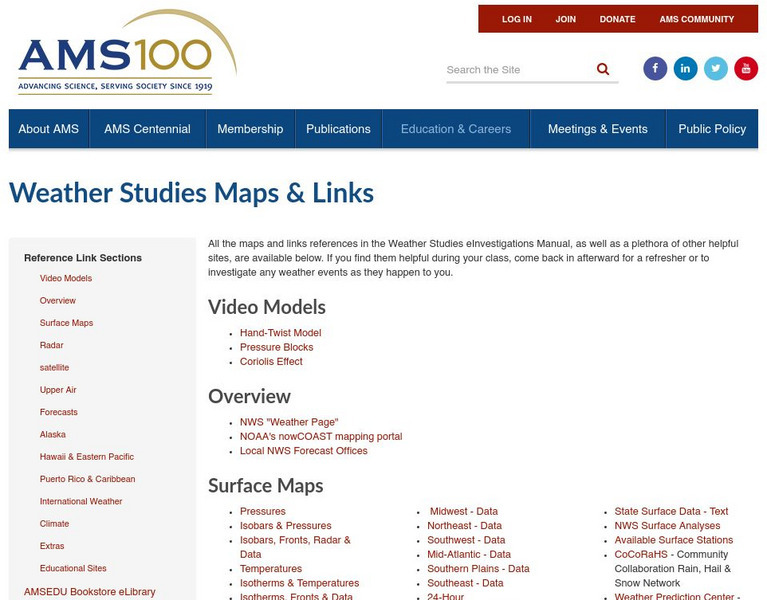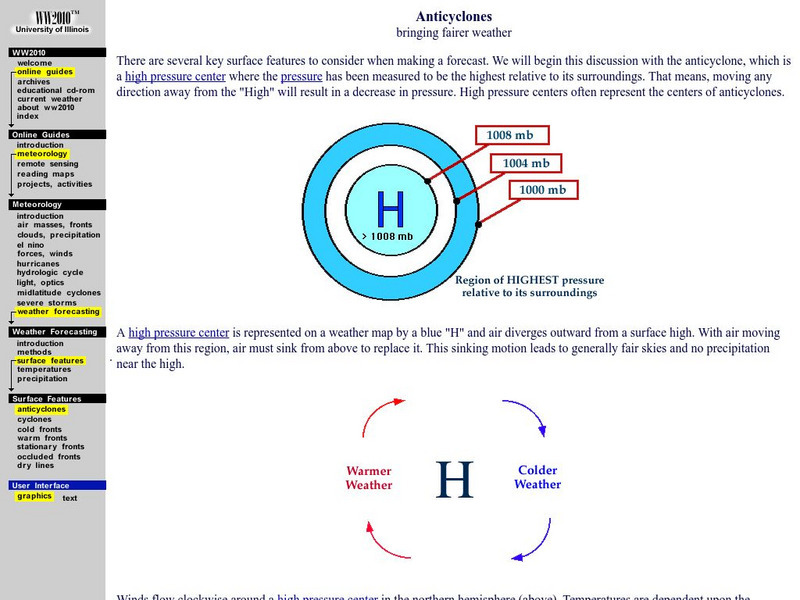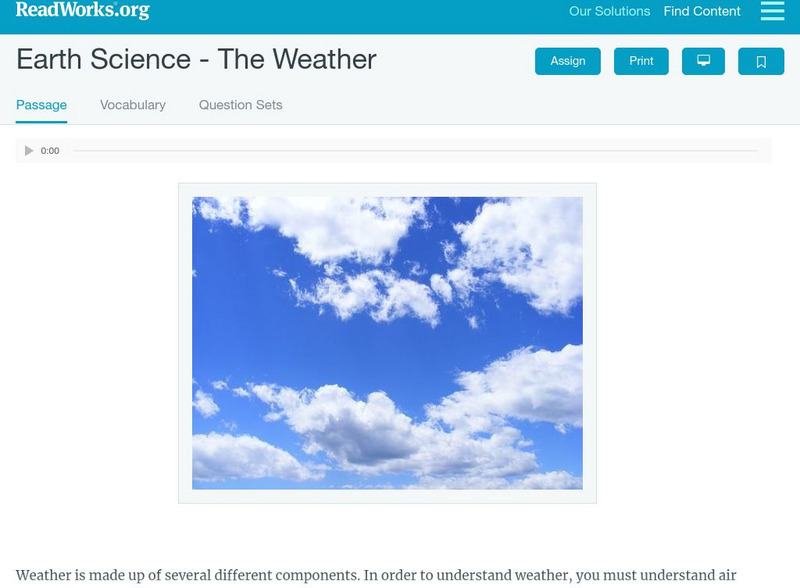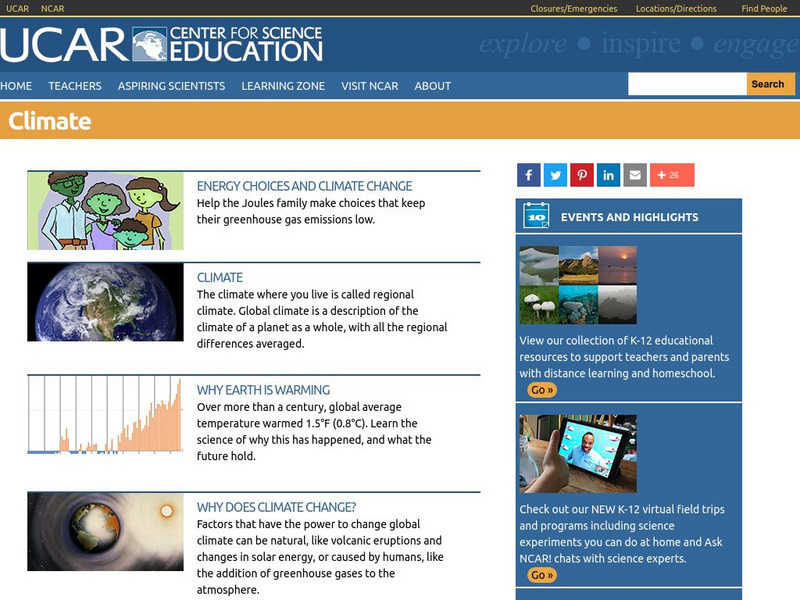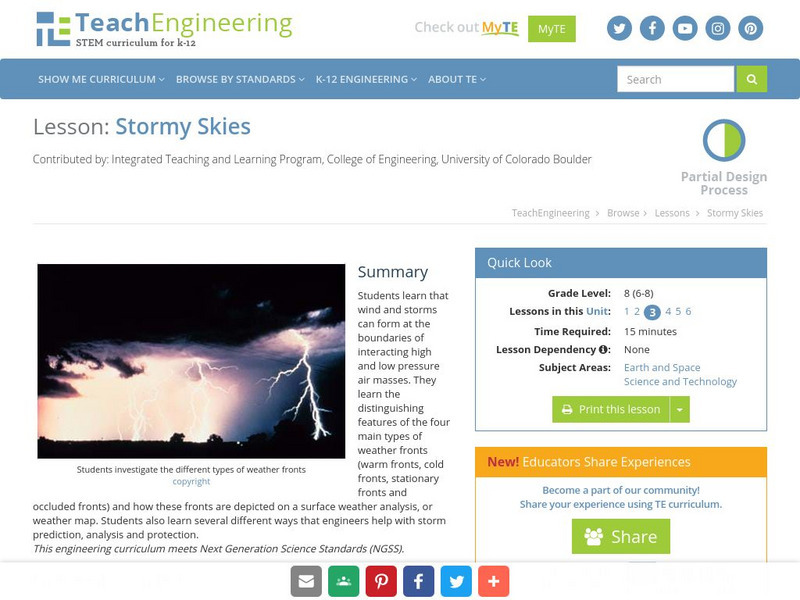Hi, what do you want to do?
National Snow and Ice Data Center
National Snow and Ice Data Center: Factors Affecting Arctic Weather and Climate
An introduction to the factors that affect the Arctic's weather and climate: latitude, land/sea distribution, solar radiation, air temperature, air pressure, winds, humidity, clouds, and precipitation.
ClassFlow
Class Flow: High and Low Pressure Systems
[Free Registration/Login Required] This flipchart provides an opportunity to sort high and low pressure system characteristics using a graphic organizer. Activote activity provides assessment of student learning.
Other
American Meteorological Society: Data Streme Atmosphere
This site provides an extensive amount of weather information. Includes current information, forecasting, and historic weather related events. Weather map symbols and terminology explained.
Science Buddies
Science Buddies: How Does a Wind Meter Work?
On a windy day it is hard to keep your hat on. The power of the wind can even be strong enough to power large wind turbines to make electricity. In this experiment, find out how you can make your own instrument to measure the speed and...
University of Illinois
University of Illinois Urbana Champaign: Surface Features to Consider When Forecasting
This site looks at the important surface features to consider when making a forecast. High pressure and atmospheric pressure is explained. Be sure to use the arrows at the bottom to navigate through this site.
Read Works
Read Works: Earth Science the Weather
[Free Registration/Login Required] An informational text about weather. A question sheet is available to help students build skills in reading comprehension.
USA Today
Usa Today Weather: Using Winds and a Barometer to Make Forecasts
Describes the ways in which wind direction and barometric pressure can be used by the amateur weather forecaster to make predictions about the weather.
Utah Education Network
Uen: What Is a Barometer?
Learn about the barometer and how it helps to predict the weather.
CK-12 Foundation
Ck 12: Plix Series: Gas Mixture and Molecular Speeds
[Free Registration/Login Required] Hike to the top of Mt. Everest and observe what happens to the amount of molecules pushing down on the surface of the Earth. After the activity, answer one challenge question about the topic.
Scholastic
Scholastic: Investigate: Explore Climate Condition
An interactive weather maker allows students to manipulate temperature and humidity and to view the type of weather that results.
University Corporation for Atmospheric Research
Ucar: Introduction to Climate
A detailed overview of the Earth's climate, with explanations about the difference between weather and climate, dendrochronology, palynology, and how Earth's climate has changed over time. All information is reinforced through pictures,...
Curated OER
Weather Dude: The Sun
Weather site highlights the Sun and how it causes all of our weather. Discover how it affects air pressure and learn some interesting facts along the way.
TeachEngineering
Teach Engineering: Stormy Skies
Learners learn that wind and storms can form at the boundaries of interacting high and low pressure air masses. They learn the distinguishing features of the four main types of weather fronts (warm fronts, cold fronts, stationary fronts...
Oklahoma Mesonet
University of Oklahoma: Overview of Meteorology
The University of Oklahoma explores numerous types of weather and atmospheric changes, as well as the reasons behind them. Content details the four seasons, common meteorological variables, the vertical structure of the atmosphere, how...
University Corporation for Atmospheric Research
Ucar: Wind
Wind is air moving from a place that has higher pressure to one that has lower pressure. Sometimes wind is just a light breeze and other times it is strong enough to blow the roofs off buildings.







